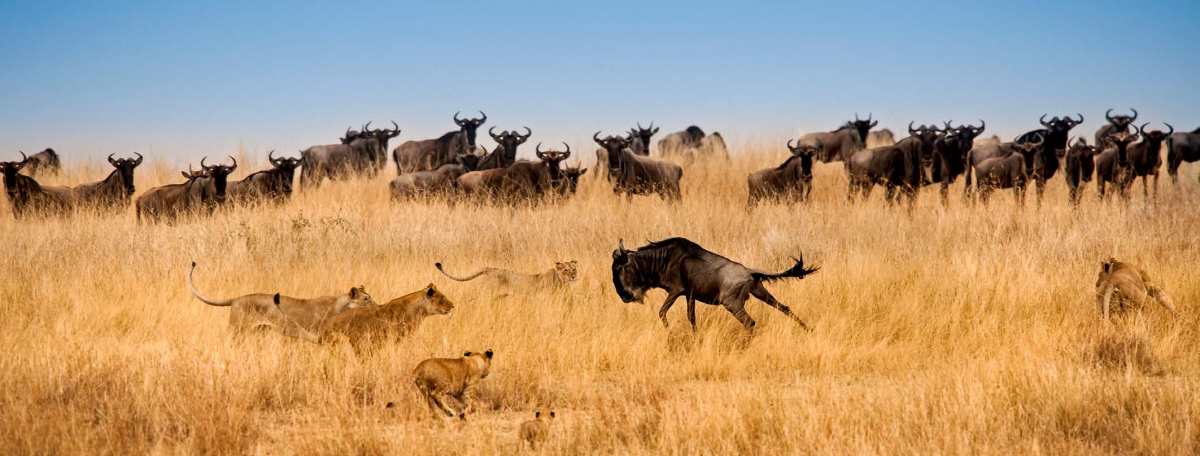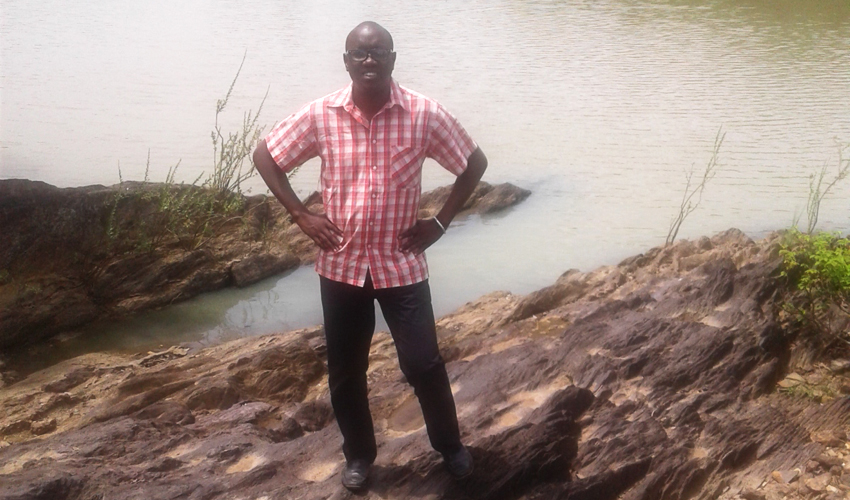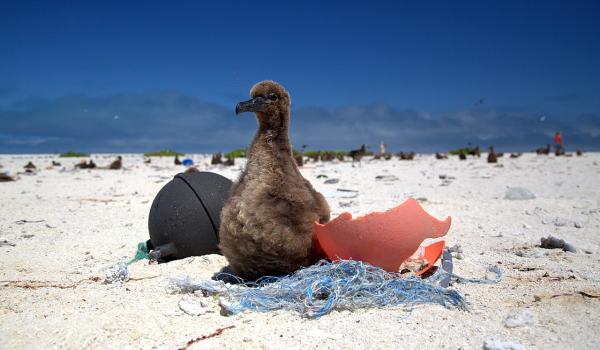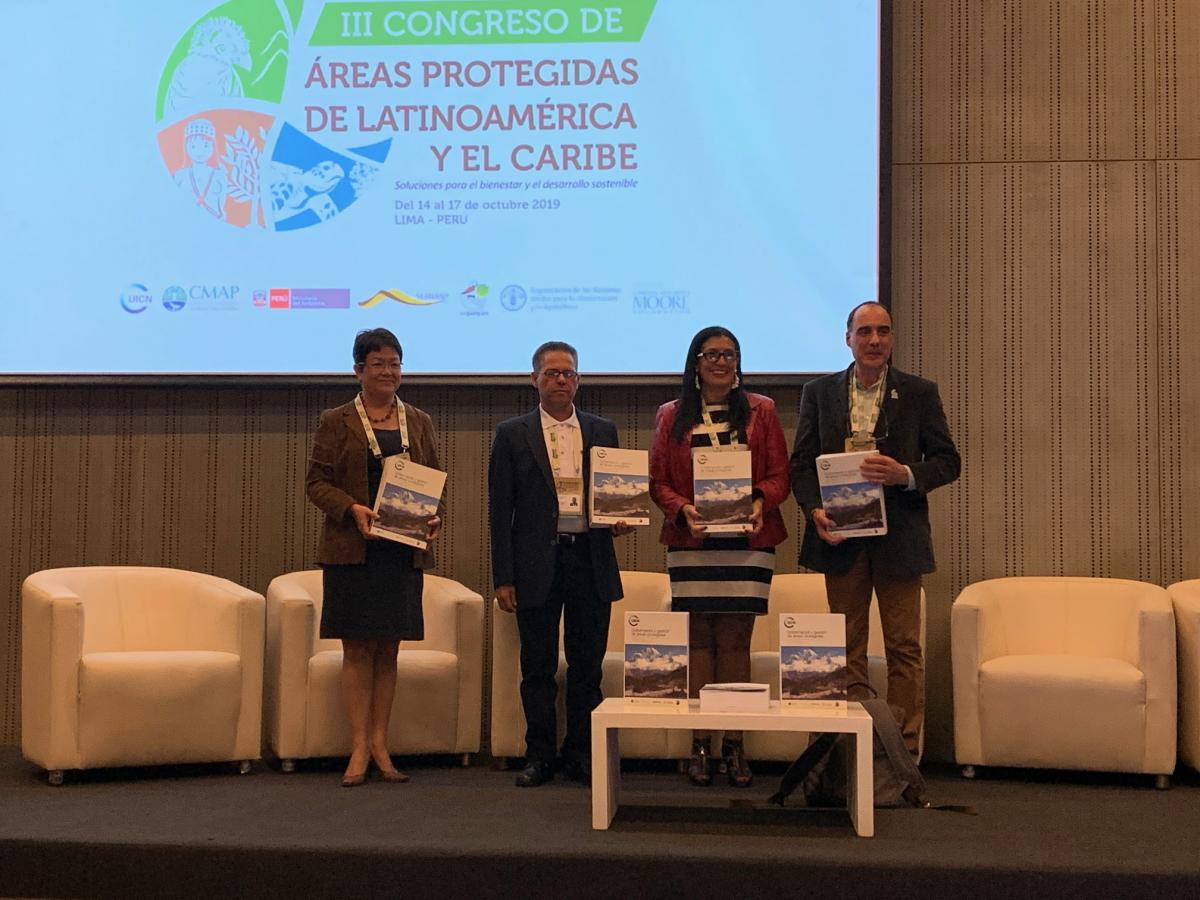Where lions go, Africa goes. Unlocking the value of lions and their landscapes
Lions and their landscapes are a major part of Africa’s lifeblood indicator. Facing a catastrophic decline in lion population and habitat, a fresh report is the first to look in detail at the wider ecosystem services lions and "lionscapes" provide.

Photo: The New Lion Economy report
The lion, one of the world’s most iconic animal species, is facing a catastrophic decline, with Africa’s population dropping 50% in only twenty years. A fresh report, the New Lion Economy, is the first to look in detail at the wider ecosystem services provided by lion landscapes, showing ways in which people are the real winners when lions and their habitats are preserved and nourished.
The report, launched on World Lions Day (10 August), shows that the economic development of Africa and conservation of nature are convergent, not conflicting goals, that it is a false dilemma to suppose that Africa’s wildlife and wild landscapes must be sacrificed in order for the continent to modernize and maintain the pace of its economic growth. Mr Kaddu Kiwe Sebunya, CEO, African Wildlife Foundation, describes lions and “lionscapes” as “the most important national asset.”
Lion conservation conserves much more than just lions.
Africa’s ecosystems generate goods and services that help secure the livelihood of over 62% of the rural population, more than 300 million people in sub-Saharan Africa, as well as supplying essential services such as water for its rapidly growing cities. Landscapes supporting lions, “lionscapes”, provide more ecosystem services, the benefits that humans receive from healthy ecosystems, than the average across Africa. Yet many of these services will disappear if ecosystems are lost or degraded. Lions, therefore, make excellent indicators of ecosystem services and sustainable development.
Lionscapes provide a larger than average contribution to Africa’s ecosystem services; the many benefits humans receive from healthy ecosystems, and lions are the ultimate ‘indicator species’ of healthy, intact savannah landscapes in Africa. Their dramatic decline is a sign of the pressures on land and communities throughout their range. This report provides evidence that lions are a perfect flagship or umbrella species on which to focus policy and development decisions. Investing in lion conservation confers a range of benefits to nations where they can thrive.
The continent will continue to be reliant on the range of ecosystem services provided by its wildlife, forests, savannahs and freshwaters: providing ecosystem services like clean water, buffering against floods and desertification, carbon storage, wild food and many more. A healthy lion population indicates healthy savannah and miombo, which in turn indicates vital contributions to food and water security, disaster risk reduction and climate stabilisation. Investing in lion conservation is not simply a charitable act, it also protects the many commercial and subsistence values that rely on lions directly, or that rely on the landscapes where lions live, and come as a no-cost extra to conservation.
The Lion Recovery Fund has supported this report, the first of its kind, to highlight the importance of lions and their territories for Africans.
The New Lion Economy shows:
- Lions directly support ecosystem services: Iconic animals like lions attract tourists and trophy hunters worth millions of dollars every year to the economies of many African countries.
- Lion conservation supports other ecosystem services: Even more significantly, lionscapes maintain many other services such as water sources vital for drinking water and power; store carbon to mitigate climate change; support food security; and protect communities against some weather-related disasters.
- Lions also have important livelihood, cultural and political values: Lions are at the heart of African culture; recognising and managing for the wider values of lion conservation helps to build community and political support for co-existence.
- Lions can generate economic benefits and attract new sources of revenue: a better understanding of ecosystem services from lionscapes will help gain access to different funding streams, which can support livelihoods and sustainable development as well as lions.
- Lion conservation is not just a matter for conservationists, but for anyone interested in a sustainable and vibrant future for Africa. Lion populations are collapsing and have already gone from many countries. In a drive to build economies and lift people out of poverty, governments are reluctant to spend more money on conservation, seeing this as a diversion from other pressing needs. But they are ignoring the serious environmental problems being faced by the continent. Africa is already experiencing the loss of ecosystem services; and even more worrying, most countries have little resilience to climate change. Understanding the interconnectedness of land and associated flora and fauna, the way it is used and the services it provides are essential to establishing an equitable and sustainable future. Many conservation initiatives are protecting intact ecosystems, symbolised by the top predators such as lions, and promoting sustainable livelihoods. The map captures just a few of these initiatives within the lion range that are highlighted in this report.
- Lion conservation needs serious investment if these wider values are to be retained.
- Action needed to support lions and ecosystem services.
If Africa is to support a rapidly expanding human population and a growing economy, countries must invest in ecosystem services as essential life support mechanisms. A range of actions are needed:
- Measure and communicate the value of ecosystem services (actual and potential) to all sectors of society
- Rebuild ecosystem services to improve food, carbon, water and human security in sub-Saharan Africa
- Use the market for these ecosystem services to support conservation throughout the lion range
- Create business models that support both ecosystem services and lions
- Create conservation models that reflect the needs of human communities
- Encourage policymakers to consider these benefits (and their potential loss)
- Encourage governments and international donors to invest in lion conservation
- Recognise the significance of the continent’s unique biodiversity in shaping and sustaining Africa’s cultural heritage
- Restore lion populations as an indicator of healthy ecosystem services
“Ultimately conservation is about people. If you don’t have sustainable development around these (wildlife) parks, then the people will have no interest in them, and the parks will not survive.” Nelson Mandela



